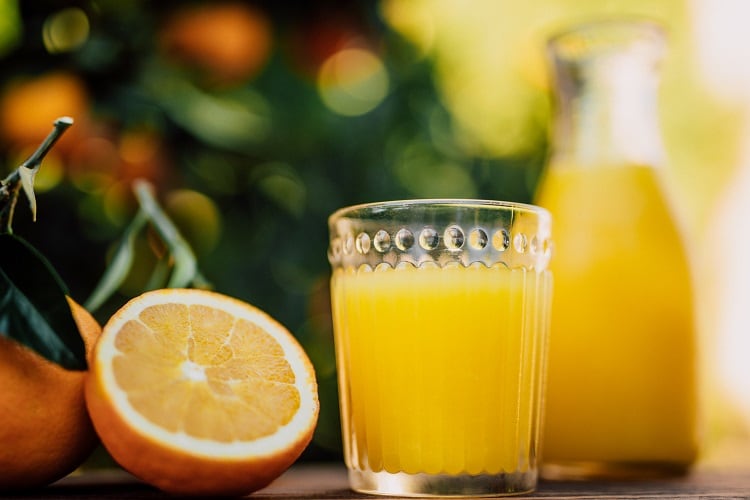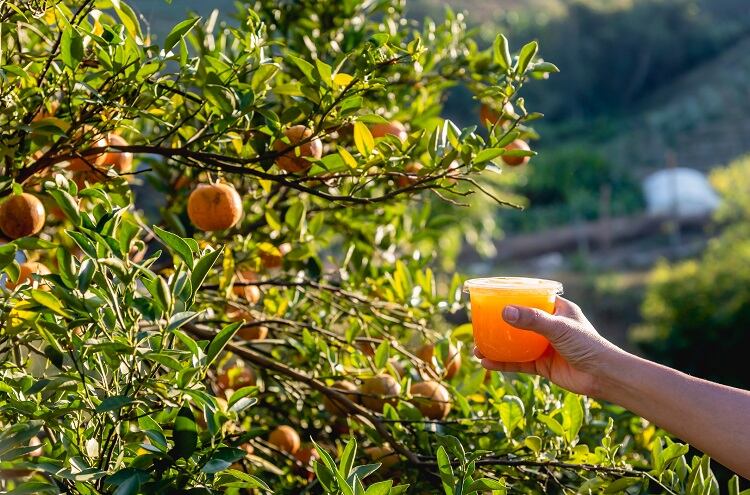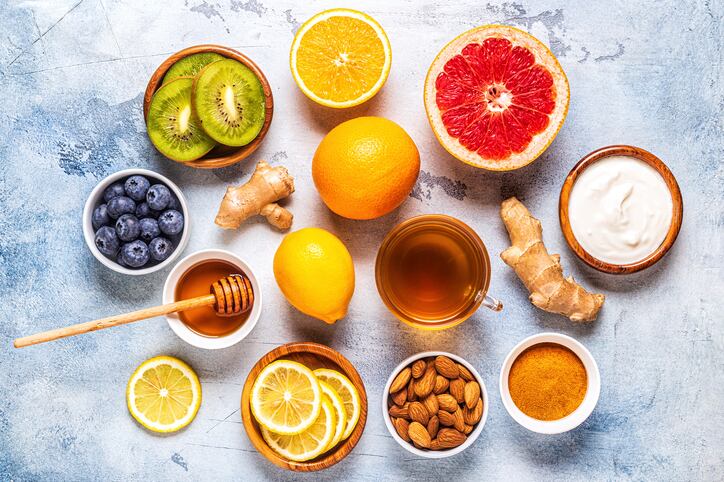The vast majority of the world’s orange juice is produced in just two countries, the US and Brazil. But both these countries’ orange producing regions (Florida and São Paulo are responsible for more than 85% of global supply) are struggling.
With a severe drought hitting Brazil and citrus greening disease plaguing both orange producing regions, is the orange juice sector heading for severe shortages?
Soaring temperatures contribute to OJ price hikes
Brazil has been seeing the kind of heat most of us will never experience. Between July and September, satellite imagery showed widespread vegetation stress across the Amazon basin. In the months that followed, the mercury soared to 41˚C, a record for the winter-spring season, culminating in a reported all-time-high of 59˚C in the country’s capital.
The recent heatwave in Rio de Janeiro made headlines because on this same day, during popstar Taylor Swift’s Eras Tour, a fan collapsed and later died in hospital. Forensics findings reportedly attributed the death to heat exhaustion.
Extreme weather is contributing to orange juice scarcity and as a knock-on effect, price rises. According to the British Fruit Juice Association (BFJA), orange juice is at its lowest availability for more than 50 years. With extreme weather becoming more frequent and tree diseases diminishing harvest yields, price increases are expected, noted the association last year. Around the same time, FoodNavigator sister publication The Grocer reported that almost one in five fresh and long-life orange juice lines had experienced recent price hikes.
“Suppliers and manufacturers are working hard to manage the situation to limit these shortages but realistically this situation could be with us for a while,” explained the BFJA.
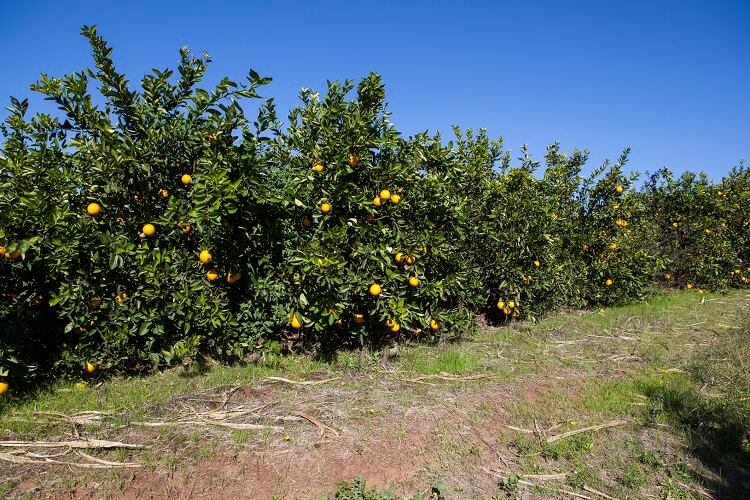
How does drought impact orange juice production?
It’s not only the BFJA preparing for shortages. Orange juice majors such as Louis Dreyfus Company (LDC) – the third largest orange juice processor in Brazil – is working hard to ensure business continuity, FoodNavigator was told.
The recent heatwave in Brazil, associated with a strong ‘El Ninõ’, has adversely affected orange groves during the blooming and early fruit-setting period, resulting in an increased fruit drop rate, explained a LDC spokesperson. A strong El Ninõ also led to decreased rainfall frequency and more extreme rainfall events which, combined with high temperatures, fails to satisfy the plants’ water needs resulting in significant losses.
What is El Ninõ?
El Ninõ Southern Oscillation (ENSO) is one of the most important sources of annual global climate variability, second only to the earth-sun relationship that drives seasons, according to the World Health Organization (WHO).
In Latin America, El Ninõ usually results in drier conditions in northern Brazil.
The joint influence of both El Ninõ warming and rising global temperatures caused by climate change amplifies the potential for extreme heat in many regions.
“Considering that 60% of the Brazilian citrus belt depends on natural rainfall, and is therefore impacted by the current climate conditions, stocks will likely remain tight over the coming season.”
LDC is closely monitoring weather conditions to anticipate and mitigate impacts on harvests and operations, to ensure continuity of its delivery of juice and citrus ingredients to clients, the spokesperson continued.
“LDC is also expanding irrigated areas to anticipate blooming and mitigate drought and heat stress effects. Investments in technologies such as soil conditioners and probiotics enhance orchard resilience, while our efforts to improve the root system aid nutrient uptake from the soil.”
Low OJ supply in one country could create opportunity in another
Drought and water scarcity aside, the other major threat facing the orange juice industry comes in the form of a bacterium. Commonly known as citrus greening disease, Huanglongbing (HLB) is caused by a bacterium transmitted by the Asian Citrus Psyllid and negatively impacts how nutrients are transferred from root to tree.
Once infected, tree yield declines and fruit appearance and flavour are affected. As there is currently no cure, the disease ultimately ends up killing the tree. HLB has been detected in nearly all major citrus growing regions, including in the US, Brazil and Mexico.
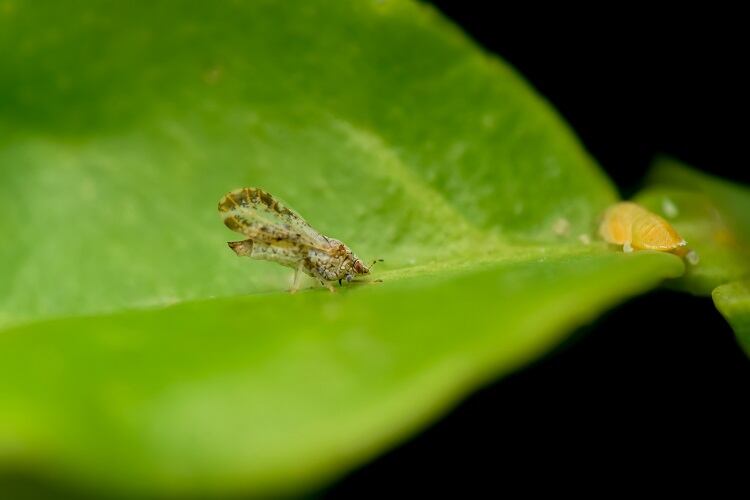
In the US, orange juice production has fallen year-on-year due to the spread of HLB, explained the LDC spokesperson. But reduced supply in the US creates opportunities in other regions, including Brazil, the spokesperson suggested.
The orange juice major believes the disease can be stamped out, and is collaborating with other stakeholders to achieve this goal. “LDC actively participates in the Brazilian Citrus Defense Fund, which monitors disease incidence, guides operational control practices and develops research to control the insect vector.
“We believe that the combined efforts of all citrus growers can prevent the disease from spreading in the country, as it has in other producing regions around the world.”
Less orange juice, more orange flavoured ingredients?
It is possible that an orange juice shortage also creates new opportunities for members of the ingredients sector.
When we caught up with supplier ADM at the recent Food Ingredient Europe (FiE) event in Frankfurt, Germany, Mel Tunderman, vice president of savory EMEA suggested orange juice might end up being the topic in the beverage industry because of disease and drought stress. “There might be an all time low in orange juice, which is heavily affecting the industry.”
ADM has already observed demand from some of its beverage customers interested in the supplier’s citrus flavour capabilities, the VP revealed. They want to create an orange blend, but retain the same taste profile as conventional orange juice, ‘to adapt to the influences that are caused by Mother Nature’.”


